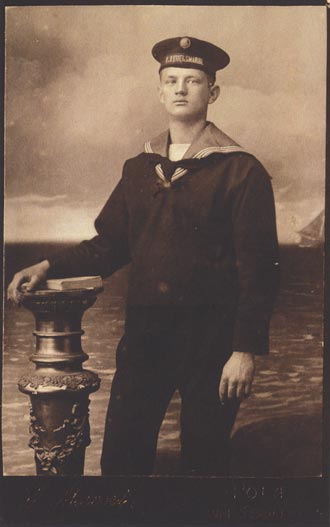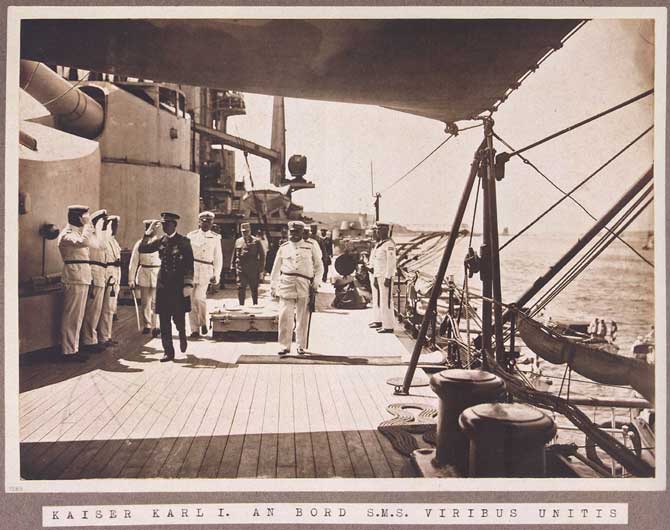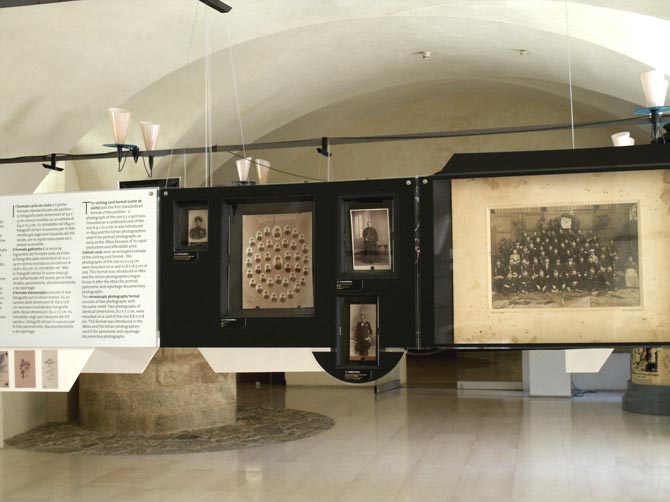Photography in Istria up to 1918 from the holdings of the Collection of Photographs, Negatives and Photographic Equipment
History Museum of Istria - Museo storico dell'Istria, guest appearance in Zagreb City Museum
Exhibition concept: Lana Skuljan
Exhibition design: Noel Mirković
Poster design: Alfio Klarić, Sv. German, Pula
 Marking the 170th anniversary of the invention of photography, today the newest artistic manner of expression and the most important element of visual communication and documentation, the History Museum of Istria organised the exhibition Photography in Istria up to 1918 from the holdings of the Collection of Photographs, Negatives and Photographic Equipment, presenting to the public the beginning of the development of photography in Istria.
Marking the 170th anniversary of the invention of photography, today the newest artistic manner of expression and the most important element of visual communication and documentation, the History Museum of Istria organised the exhibition Photography in Istria up to 1918 from the holdings of the Collection of Photographs, Negatives and Photographic Equipment, presenting to the public the beginning of the development of photography in Istria.
Today photography is explained as the technique for the chemical or digital creation of an image via the light that reflects off the object photographed. Its invention was preceded by numerous investigations and experiments of a series of people who had the same objective – to obtain a lasting and credible image of reality. In 1827 the French research Nicéphore Niépce managed to take the first permanent photograph with the heliographic process. French painter and chemist Louis Jacques Mandé Daguerre invented the first practical process for obtaining a photograph under the name of the daguerreotype in 1839. At about the same time, in 1841, William Fox Talbot invented and patented the first negative and positive process that was to become the foundation stone of modern photography. Daguerre’s invention was soon popularised and diffused throughout Europe, notwithstanding the negative reactions in artistic and professional circles, which opined it would destroy painting, hitherto dominant and very well placed.
Then came a rapid development of the art of photography, particularly of diverse improved photographic techniques, formats, equipment and studios. Travelling photographers, today mainly anonymous, considerably contributed to the rise in the popularity and rapid diffusion of photography in the early period. Over the course of time the job of photographer became highly appreciated and respectable and so a large number of professional photographers and studios appeared. As photographic technology developed, there were increasing numbers of amateurs who dealt with photography in their spare time.
 Soon after the presentation of Daguerre’s invention to members of the French Academy, the news was carried in Croatian papers. Only three months after the discovery, in Danica Ilirska no. 14 of April 6, 1839, an article was published entitled “Most important discovery of our time”. This indicates that Croatia was up to date with the discovery of photography from the very beginnings; the first professional photographer, Demetar Novković, was working in Zagreb as early as the 1840s, and the first professional studio was founded by Zagreb photographer Franjo Pommer in 1856. Not only Zagreb, but also other cities were important photographic centres in the 19th century: Osijek, Karlovac, Rijeka and Zadar.
Soon after the presentation of Daguerre’s invention to members of the French Academy, the news was carried in Croatian papers. Only three months after the discovery, in Danica Ilirska no. 14 of April 6, 1839, an article was published entitled “Most important discovery of our time”. This indicates that Croatia was up to date with the discovery of photography from the very beginnings; the first professional photographer, Demetar Novković, was working in Zagreb as early as the 1840s, and the first professional studio was founded by Zagreb photographer Franjo Pommer in 1856. Not only Zagreb, but also other cities were important photographic centres in the 19th century: Osijek, Karlovac, Rijeka and Zadar.
The beginning of Istrian photography, according to examples that are today kept in the holdings of the History Museum of Istria, is linked to the names of two photographers that were at work at the beginning of the 1860s: Luigi Caenazzo, an amateur from Rovinj, and Luigi Mioni of Pula, the first professional photographer in Istria. In 1862 Mioni opened his studio in Pula, and worked as the first navy photographer. Naval photographer was a particular feature of Istrian photography, which made it distinct from that in the rest of Croatia. Every professional photographer, who was by definition a civilian, had to get a permit to take pictures of Pula port issued by the naval section of the War Ministry. After Mioni, this license was obtained by the local photographers Blasius Circovich and Rudolf Marinovich.
At the end of the 19th and in the first two decades of the 20th century there were a good many professional photographers and studios in Pula:
Giovanni Bonivento,
Demetrio Buttignoni,
Studio Ofelia,
Angelo Ghega,
Cesare Gallinaro,
Fiorini G. Gallinaro,
Erminio Mioni,
Stephan Vlach,
Heinrich Zamboni, as well as
the Flora, Olympia, Schrecker, Sintich & Co and Venus studios.
Professional photographers started up businesses in other cities:
G. Lion in Pazin,
Attilio Ceregato in Rovinj,
Studio Betty, Edmondo Jelussich and Ivan Letis in Opatija,
G. B. Mazzucco in Gorica and
Studio Aurora in Veli Lošinj.
Some foreign photographers also made quite a contribution to the beginnings of Istrian photography. The best known was Alois Beer, imperial and royal court photographer from Klagenfurt, who took scenes in Pula port and city and vedute of almost all the towns in Istria. Also worth mentioning are Trieste photographer J. B. Rottmayer, Austrian photographer Antun Hauger, who took shots for the Rotes Kreuz studio, and Benedikt Lergetporer, who made his name as an excellent landscape photographer.
Most of the photographers and studios on the whole did portraits in the two most popular formats – the cabinet and visiting card formats. Each photographer was mounted on card, the back of which served as an advert for the photographer – the name of the artist or studio, address and perhaps list of prizes from various exhibitions would be given. Apart from portrait photographs, documentary and reportage as well as panoramic photographs were taken, today a rich source for the study of the architectural heritage of Istrian towns, and for various kinds of economic, cultural history, ethnological and sociological research.

Photography in Istria was particularly characterised by the work of the photographic section of the naval engineering committee, under the aegis of which many photographs of the documentary/ reportage genre were created. These photographs were taken by official photographic officers who served in every Austro-Hungarian ship, and who had acquired the elements of photography at a specially organised course. These photographs document absolutely all segments of the Austro-Hungarian navy – the order of battle of the whole fleet, the naval air force, naval structures and institutions in Pula, the naval port, the maritime arsenal and the everyday life of the sailors.
This exhibition and catalogue made available to the public for the first time part of the exceptionally capacious holdings of the Collection of Photographs, Negatives and Photographic Equipment of the History Museum of Istria in Pula.
Lana Skuljan
Pictures from the exhibition






photo Miljenko Gregl, ZCM

